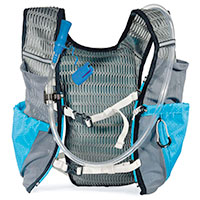Preventing running injuries involves examining your approach to training as well as your equipment. Up to 10 times, your body weight is passed through the joints of the lower limb with each step you run. This obviously increases the risk of injury. There are a number of factors that may help you avoid sustaining a running injury.
Training
The frequency, intensity, time and type of training that an athlete puts in can affect their chances of injury. As often seen with new runners, doing too much too soon is a big cause of injury.

Technical Running Socks
The general rule of thumb is that distance should not be increased by more than 10% from the last week. Following this rule should help to avoid certain overuse injuries by gradually increasing the mileage and so stress put through your legs! Other errors include not having enough rest days and continually running on very hard surfaces or up and downhills.
Footwear
The importance of getting the right running shoe cannot be stressed enough. There is now such a large selection of running shoes available that the runner may become bewildered by the act of narrowing down shoes to suit them. There are basically three types of running shoes cushioned; stability and motion control.
Stability shoes are most suited to people who have a neutral foot posture and do not over-supinate or pronate. Cushioned shoes are designed for those who, or have a high arch and motion-control shoes are most suited to runners who overpronate or have a flat arch or arch that rolls in when running.

Sports Ankle Socks
Stretching
There is controversy surrounding the use of stretching to prevent running injuries. Research has shown conflicting evidence regarding the effects stretching routines has on injury prevention. The general consensus at the moment is that until stretching is proven to have no beneficial effect, then it should be included in your running training.
Stretches should be incorporated for all of the lower limbs, including the quadriceps, hamstrings, calf, hip flexors, gluteals (buttock muscles) and peroneals (outer lower leg muscles). Stretching should be performed before and after each run, with each stretch being held for a minimum of 20 seconds and repeated

Running Hydration Packs
Strengthening
If running is the only form of exercise an individual takes part in, then the repetitive motion of running is limited in its ability to strengthen the muscles of the lower limb. A program should be developed to strengthen the lateral hip muscles, hip flexors, extensors, quadriceps and calf muscles. Building strength in these areas will help to improve your biomechanical efficiency (your running style), which in turn, reduces the rate of injury.
Strapping & Taping
A range of sports taping techniques help reduce strain on muscles and joints, especially if you are prone to injury or are recoverying from a recent injury.
External links:
- Learn about running knee supports at UPMedical.co.uk
- Buy Running Shoes at Sportlink.co.uk
- Buy Running socks at 1000mile.co.uk
- Buy Kinesiology tape at UPMedical.co.uk
- Buy Plantar Fasciitis insoles at 1000mile.co.uk






